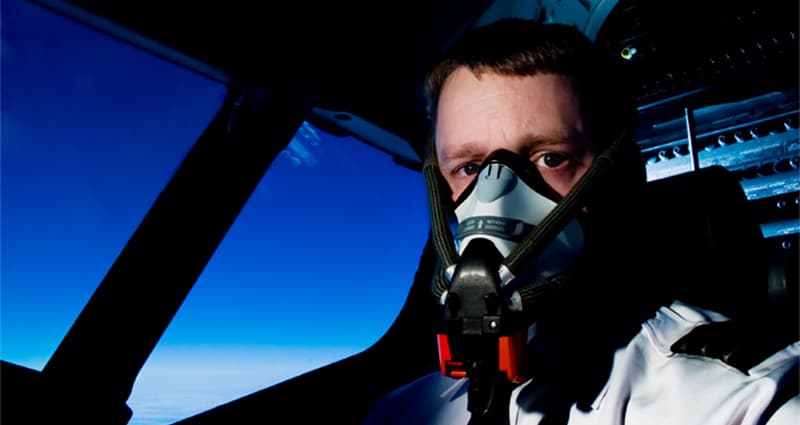The Need to Ensure Skill Proficiency in Oxygen Mask Use

All pilots have undergone emergency mask training in accordance with the high altitude endorsement (HAE). This training is performed in FAA-approved simulators emphasizing the importance of rapid donning of the mask during a simulated decompression. Additional requirements include the need to test the viability of the mask during the pre-flight check list. But is that enough? Try answering the following questions to test your skill level.
1. Once you and another crew member have donned your masks, how long should you wait for the other person to fully recover from hypoxia?
The answer is one minute. Research has shown that if the mask is properly fitted, the oxygen saturation in the blood returns to normal in 60 seconds. Hence we can call this the “One Minute Rule.” As long as the person did not lose consciousness, even if they became very hypoxic, it should not take more than one minute to fully recover. Beyond that point, you should be very concerned and ensure that their mask is fitted properly.
At flight levels of 40,000 feet the mask must be secured tightly. If the person did lose consciousness it will take a little longer to recover. It is important during this time not to just wait for them to regain consciousness. Startle them by pushing on their chest and calling their name loudly. This will stimulate them to take a breath and often they will suddenly recover. They may be disoriented momentarily so give them an extra minute or two to fully recover.
2. Do you know how to properly equalize your ears with the mask on?
This requires practice. During an emergency descent, you may notice pressure building up in your ears. Do not ignore this! This is the time to use the Valsalva maneuver. If you wait until your ears hurt, it may be too late and the equalization technique may not work. Scuba divers are very familiar with this technique, which requires you to pinch your nose, close your mouth and gently force air from your lungs up into your ears. You know it is effective when you feel the pressure dissipate or if you hear your ears popping or whistling.
But, can you use this technique properly with the mask on? Yes. The best way is to slightly rotate the mask just enough for you to get your fingers onto the soft part of your nose so that you can pinch it closed. Do not take your mask off as you may become hypoxic. It is essential to equalize as often as needed during the descent in order to prevent excruciating ear pain on final approach. Failure to do so can result in incapacitation. Remember, “Equalize Early” and do not wait until your ears hurt. Also, you should remind your crew members to do the same. In the heat of the moment, it is easy to ignore early ear pressure.
Most of us don’t spend much time with our masks on other than to meet the minimum training requirements. However, your mask can be your “life saver,” so you should be very familiar with it. For some people there is a reluctance to practice with the mask because of legitimate contamination concerns. If you have that concern, take the time to learn how to properly clean your mask so that you feel more comfortable practicing with it. The onset of a cabin decompression event is not the time to learn whether you are proficient with your mask.

SAMI is the prime research institute regarding the phenomena of Slow Onset Hypoxia. SAMI’s decades of research have improved the way aviators around the world prepare themselves for oxygen contingencies. The patented DeSat Training program is the closest possible re-creation of the dynamic and task saturated environment a pilot will face during a pressurization event. This includes a medical understanding of hypoxia, FAA standard mask donning procedures, ATC communication, crew coordination, and post event training—all while operating at true altitudes and utilizing oxygen reserves.
http://www.SAMI-AeroMedical.com
© 2025 Southern AeroMedical Institute. All Rights Reserved.
Next ArticleRelated Posts

Navigating Geopolitical Uncertainty Using Business Aviation
Bigger business jets mean bigger fuel tanks, longer trips, more border crossings, and bigger wallets! With an equipment upgrade also comes the requirement for a knowledge upgrade.

Leadership, Accountability and Your Organization’s Risk Profile
Recent media attention has cast light on the unusual number of aviation system-related accidents, incidents and near-misses that have plagued our industry over the past several months.

